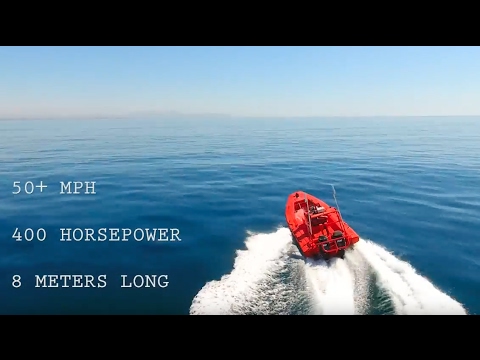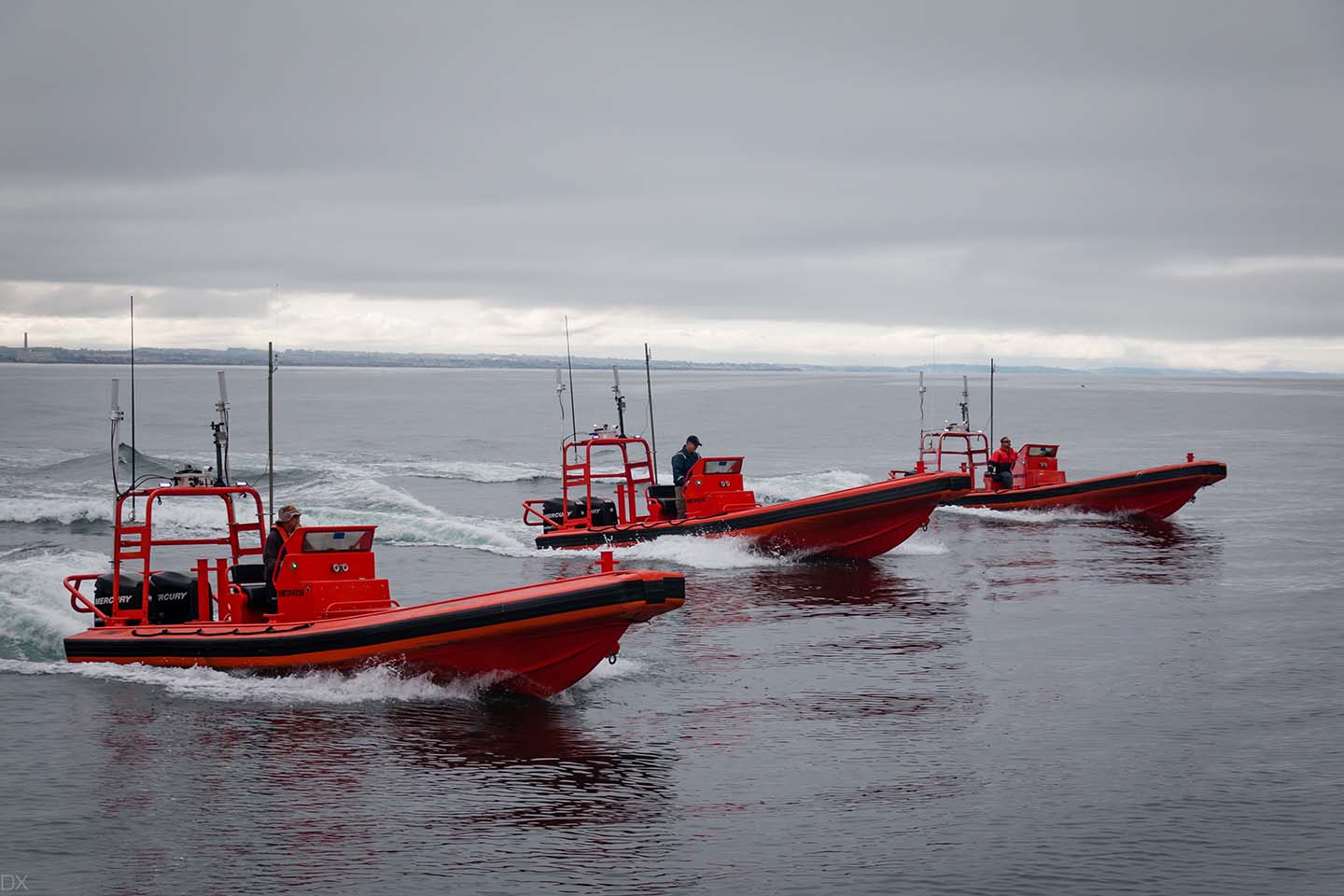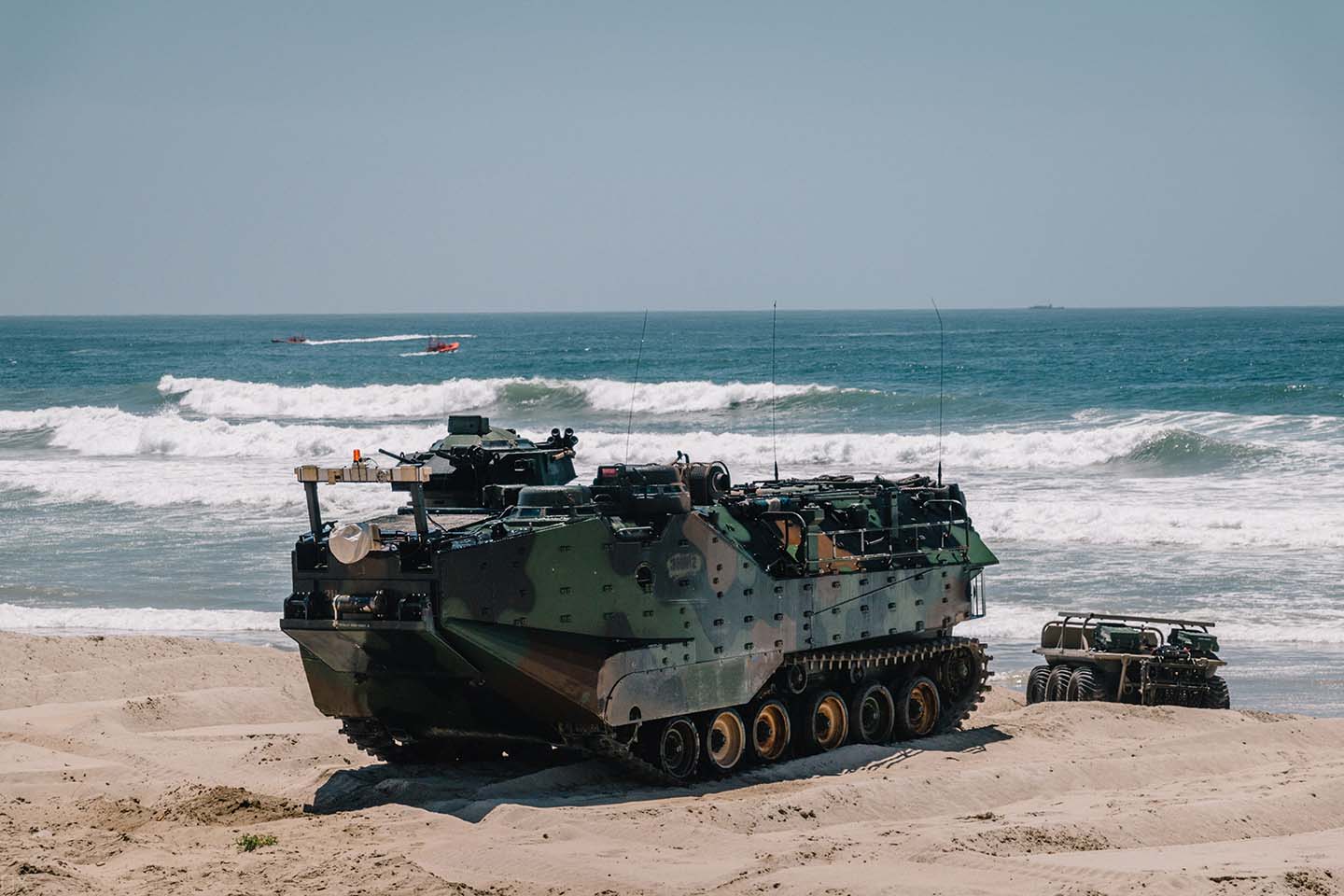Press Release
Autonomous Swarming Boats Make Great Waves at Navy and Marine Corps Exercise
Last spring, a team from the Johns Hopkins University Applied Physics Laboratory (APL), in Laurel, Maryland, had the opportunity to demonstrate Lab-developed autonomous surface patrol capabilities for the Navy and Marine Corps during the Ship-to-Shore Maneuver Exploration and Experimentation (S2ME2) Advanced Naval Technological Exercise 2017 (ANTX). The experiment was held April 19–28 at Marine Corps Base Camp Pendleton in Oceanside, California.
The goal of the ANTX series is to bring together industry and academia to showcase cutting-edge technology and equipment for the Navy and Marine Corps, allowing the services to evaluate prototypes that may eventually be developed for the military. This exercise focused on amphibious operations and how the Marines could utilize advanced autonomous technologies to transition from ship to shore with greater combat power and fewer casualties. More than 60 different vendors showcased unmanned air, ground, surface and undersea vehicles, unmanned vehicle control systems, weapon systems, communications, common operational picture and situational awareness.
The Lab’s autonomous swarming unmanned surface vessels (SUSVs) — which were first demonstrated in collaboration with the Surface Targets Branch of the Naval Air Warfare Center Weapons Division in Port Hueneme, California, last year — are equipped with APL-developed hardware and autonomy software integrated with the existing control systems for the boats (known as High Speed Maneuverable Surface Targets, or HSMSTs). The Lab was the only organization to feature multi-agent (multi-vehicle) collaborative autonomy at the event.
The APL engineering team consisted of Michael Hannan, principal investigator, and software engineer Da Xu. The team spent a number of 12- to 14-hour days on shore and on the water, demonstrating collaborative autonomy on three boats. They exercised man-on-the-loop (where an operator oversees autonomous decisions made by the SUSVs) and man-in-the-loop (the operator is part of the decision-making process) control from an operator station mounted alternately on a fourth vessel and then on shore, at ranges up to seven miles. “The team exhibited the kind of discipline and professionalism people have come to expect from APL, and they were commended by the exercise planners,” said Jim Horris, program manager. “Our folks did an outstanding job under demanding circumstances.”


